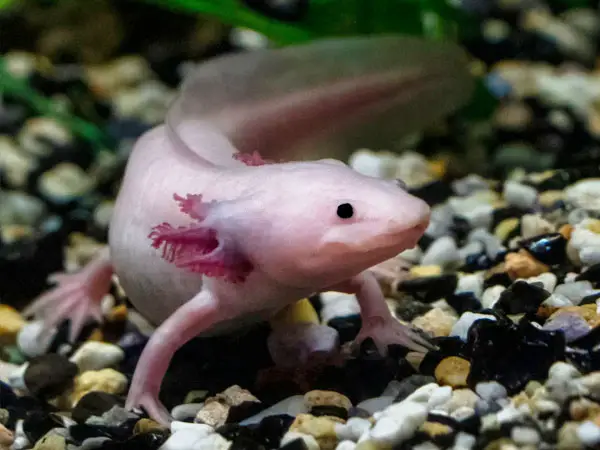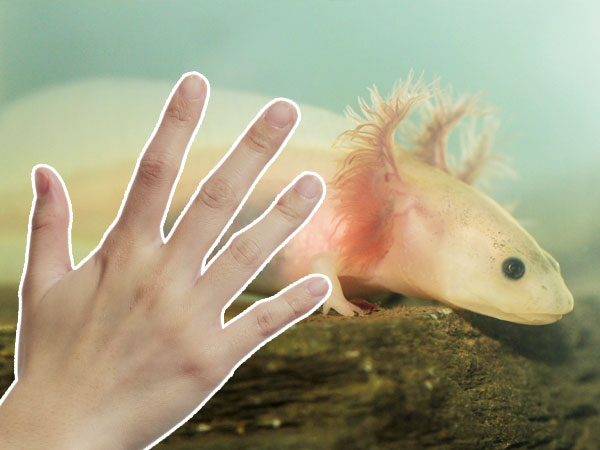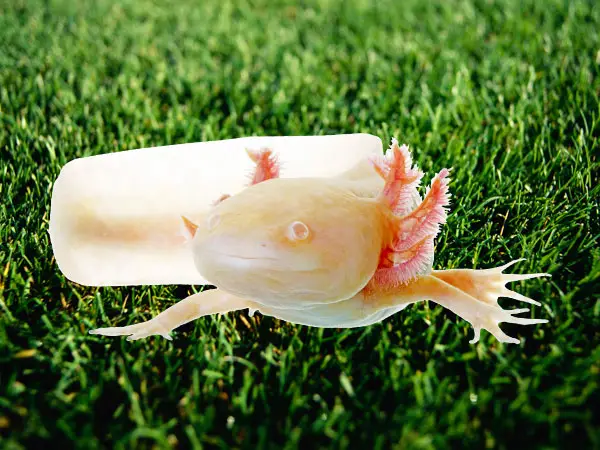Are you looking to own an axolotl and you’re worried about their lifespan? Then you shouldn’t be. A common question future axolotl owners ask is: do axolotls die easily?

In essence, axolotls are fairly hardy animals that will last you long if you treat them right. However, you will have to be careful how you manage them and how you treat them.
One of the most important things is to not touch them too often, and not stress them out as they can be quite delicate in this regard.
They don’t have the same protection for their skin as some other animals or fish do, which is something you need to keep in mind.
They are also prone to ammonia poisoning and other diseases, especially skin diseases. That’s why strong filtration is crucial if you’re keeping axolotls in your tank.
Also, they are prone to impaction at times if you feed them wrong foods or have the wrong type of substrate in your tank.
There are some things to keep in mind to let your axolotls live longer. We’ll present all of those factors in this article – read on if you want to learn more about how to keep axolotls in your tank for longer.
Common Reasons Why Axolotls Die
Do you want to know what the most common reasons for axolotl deaths are? Then read on and take a look at what can cause the axolotl to die.
Impaction
Impaction is a very common cause of death in axolotls, which is a relatively surprising thing. Many axolotl owners neglect this problem, and they don’t pay attention to this when it happens. That’s why you should be taking care of your axolotl in every way to prevent impaction.
What exactly is impaction?
It happens when your axolotl swallows something that’s too big for them to digest. That could be a piece of rock or stone, or a larger piece of substrate that gets stuck in their gut.
And since they can’t move that piece forward through their body and force it out of their body, it might be a problem to do so without professional, vet help.
To avoid impaction, make sure you have a finer type of substrate to begin with – fine gravel or even sand can work; some owners also decide to have their tank without a substrate.
Ammonia Poisoning
Most fish and aquatic animals are suspect to ammonia poisoning, but axolotls are even more. Firstly, because they don’t have a protective layer over their skin, but they are also quite delicate in this regard.
This means that you’ll need a relatively strong filtration in your tank. You will benefit from having a more powerful filtration than your tank’s size, which will protect your axolotl from potential ammonia poisoning.
Ammonia poisoning is a common cause of death for axolotls. You’ll see them starting behave lethargically, or they will change their colors. They will sometimes also gasp for air and reach towards the surface.
Hyperthermia
It might be a fairly unknown thing for those who have never owned an axie, but these animals prefer rather cool temperatures – between 59 and 64 degrees Fahrenheit (15-18 degrees Celsius).
And because the owners don’t know of this fact, they often keep their temperatures too high for axolotls, which causes hyperthermia.
In short, the temperatures should never exceed 71 degrees Fahrenheit (22 degrees Celsius). This can protect your axolotl from hyperthermia, and prevent death that can happen because of it.
If you can’t maintain such a low temperature, then you’ll need to find a way to do so. You might need a cooler, or even to cycle your water often with relatively cold water.
Parasites & Infections
Parasites and infections are also common causes of death for axolotls. They can get influenced by parasites quite easily, as they don’t have the protection over their skin.
Parasites can also come from the food you feed them, as these sources of food can sometimes be from bad sellers who don’t check the quality of the food they sell.
As a result, the food will have parasites, which can cause the axolotl to get sick and even die. Infections are also common, especially fungal and bacterial infections. These happen on the skin, and you might notice changes.
Wrong Food and Feeding
Sometimes, axolotl owners don’t know how to feed axolotls properly. They might feed them too often, or with too large food pieces, which can also cause impaction.
The best foods for axolotls are live and frozen foods, such as salmon pellets, bloodworms, earthworms, and waxworms.
They will also eat smaller feeder fish, but in moderation. Again, be careful with parasites – especially feeder fish may have parasites.
How Do You Know if Your Axolotl is Sick?
There are some clear signs that something is not right with your axolotl. These signs include:
- Loss of appetite
- Decreased energy and lethargy
- Deterioration of the gills
- Skin lesions
- Skin changes, color changes
- Poor balance
- Injuries to gills or limbs
- Lack of movement, floating
If you notice any of these symptoms, you might want to visit your vet that deals with axolotls. It’s not necessarily a reason to panic, but you need to inspect your axolotl closely and protect it from further deterioration of their health.
How Long Do Axolotls Usually Live in an Aquarium?
Axolotls can survive for quite a long time in captivity. If they are cared for properly, they can survive anywhere between 10-15 years.
Some axolotl owners have reported a much longer life span than that – up to 20 years or even longer!
It’s all about keeping good care of your axolotl. If you manage to do so, then you can expect them to reach these ranges.
However, it’s also common for axolotls to die earlier, especially if they contract a disease.
Conclusion
Axolotls usually survive between 10 to 15 years in captivity, although it depends on how you keep care of them.
If you manage to help them avoid diseases, they will survive even longer than that.




